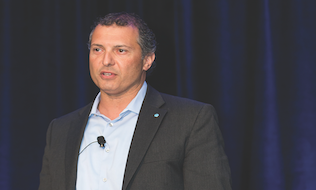
While Canada is facing the health implications of an aging population, younger people are a significant concern as well.
“For the first time, three out of five Canadians will have a chronic disease profile by age 20,” Eileen Dooley, chief executive officer of HealthPartners Canada, told participants at the Healthy Outcomes conference in June. “We need to help millennials develop behaviours that will improve their health and build their resilience to stress.”
Of course, chronic disease remains a significant concern across the generations. And with more than 7,000 new medications currently in development worldwide, the pressures on benefits plans will only intensify.
Read: Younger workers more willing to make trade-off in benefits plans
Speaking during a session with Dooley at the conference, Joe Farago, executive director of healthcare innovation at Innovative Medicines Canada, suggested organizations can prepare for the pressures by better understanding their workforce. “Compare your growth and the growth of your carrier with the increase for private plan drug costs of 4.1 per cent seen in 2016. If your drug costs are higher, then ask why. What’s the difference in your population?”
One of the best way to manage future costs, said Farago, is for employers to find new ways to prevent chronic diseases. “That will reduce the need for some medications and create cap space for future innovation.”
Dooley, whose organization is a collaboration of 16 health charities, agreed.
“Nine out of 10 of us are likely to be affected by one or more chronic diseases over our lifetime,” she said. “While it is the individual who is responsible for his or her own health, employers have a responsibility to create conditions for success.”
Read: The growing impact of chronic disease
The challenge for employers is not only reaching millennials but also the four other generations currently in the workforce. According to HealthPartners, there are several factors that make a difference when creating a multigenerational approach to workplace health. They include:
1. Leadership: Employees must see buy-in from the top.
2. Recognizing those who try: Identify the failures and not just the successes.
3. Workplace champions: People who drive activity and rally support are critically important.
4. Thinking creatively: A one-size-fits-all approach won’t reach all employees.
5. Incentives.
“We need to help those people who just don’t know where to start,” said Dooley.
“It’s really about the small steps we can take that can not only engage employees but ultimately help change their behaviour and lead to long-lasting change.”
Read more coverage from the 2017 Healthy Outcomes conference
